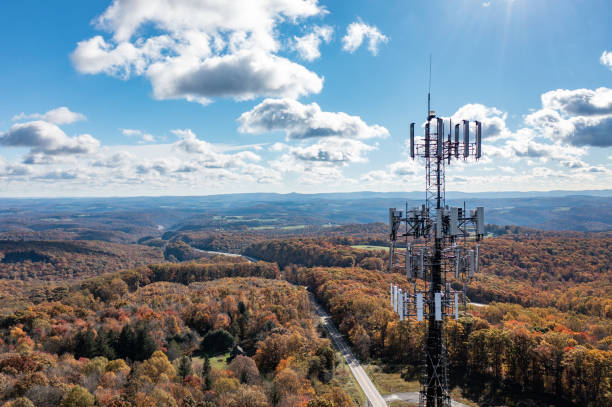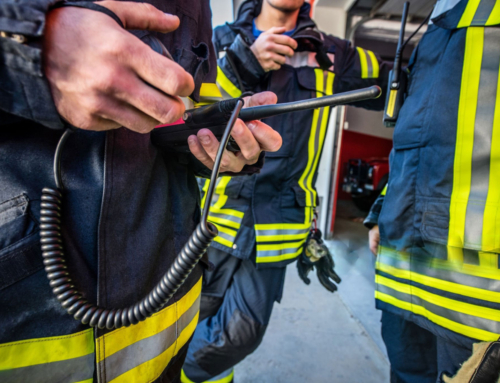Understanding the Band 41 Tribal Initiatives and Deployment Deadlines
Across rural and Native American communities, access to reliable broadband remains limited. In a landmark initiative, the Federal Communications Commission (FCC) allocated Band 41 spectrum to federally recognized tribes—granting them the ability to build their own wireless networks. This was written to explain the concept of Band 41, the Tribal Priority Window, the current deployment deadlines (including interim obligations), and the modern solutions available for deployment, in a “layman’s” language so even non-technical readers can grasp the initiative.
What Is Band 41?
Band 41 refers to spectrum in the 2.5 GHz range, offering an optimal balance of coverage and speed—critical for rural environments prevalent in tribal lands. Already used by major carriers for 4G/5G, Band 41’s mid-band characteristics make it well-suited for community networks. The name “Band 41” comes from how the 3rd Generation Partnership Project (3GPP)—the global standards body for cellular technology—categorizes spectrum bands for use in mobile networks like LTE and 5G. Band 41 is known for delivering a strong balance of coverage and speed, making it ideal for rural wireless networks. Band 41 is especially useful for delivering wireless broadband (internet) over wide areas where wired infrastructure is difficult or expensive to build.
- 3GPP assigns each LTE band a number (e.g., Band 2, Band 12, Band 41, etc.)
- Band 41 specifically refers to the 2.5 GHz to 2.7 GHz frequency range, formally defined as:
- Band 41 (TDD-LTE): 2496 MHz to 2690 MHz
- Mode: Time Division Duplex (TDD)
- The number “41” is just a sequential designation—it doesn’t have a specific meaning beyond being the 41st band defined by 3GPP for LTE use.
By deploying this Band 41 spectrum, tribes can:
- Establish broadband access independent of commercial carriers
- Connect schools, homes, clinics, and public safety systems
- Support telehealth, distance learning, and tribal sovereignty
What Was the Tribal Priority Window?
In September 2020, the FCC launched the Tribal Priority Window, inviting federally recognized tribes to apply—free of charge—for unlicensed Band 41 spectrum over their tribal land. Over 330 licenses were awarded.
Use It or Lose It Rule:
Each tribe must put the Band 41 spectrum to use within a certain timeframe. If no meaningful use is demonstrated, the license could be revoked.
To ensure this resource wasn’t held without use, the FCC initially mandated accelerated deployment:
- Interim build-out: within 2 years
- Final operational service: within 5 years
However, in July 2022, recognizing deployment delays (e.g., COVID-19, supply chain), the FCC aligned tribal timelines with the standard for other licensees via Public Notice & updating 47 CFR 27.14(u):
- Interim deadline: 4 years from license grant
- Final deadline: 8 years from license grant
These are rolling deadlines, based on each tribe’s unique license grant date. There is no universal cutoff.
What Happens After Spectrum Deployment?
Interim Performance Requirement (4-Year Mark)
As denominated by FCC Public Notice DA‑24‑327 (April 4, 2024), tribes must file a construction notification within 15 days of the 4-year anniversary of license grant.
To comply, tribes must meet one of the following:
- Mobile or point-to-multipoint service: Demonstrate reliable signal coverage to at least 50% of the population in their licensed area.
- Fixed point-to-point service: Operate one link per 50,000 people in the area.
The construction notification must include:
- A narrative describing the service type, antennas, and use cases
- Coverage area map or link route coordinates
- Population data (e.g., Census)
- Technical parameters:
- Mobile service: tower site locations, Effective Isotropic Radiated Power (EIRP), measured coverage
- Fixed services: link endpoints, count, bandwidth, distances
If a tribe fails to file or meet these metrics:
- The final deadline accelerates to 6 years
- Failure at final stage results in automatic license termination
What Needs to Happen After Installation?
Once a Band 41 solution is installed, tribes must show the FCC that they are actively using the spectrum to serve their community. This is called “substantial service.”
Substantial service can be demonstrated by:
- Delivering wireless internet to homes, schools, and businesses
- Setting up a private LTE or 5G network
- Using the network for education, healthcare, or public safety
- Showing coverage maps and performance reports
The goal is to prove the spectrum is being used in a meaningful, consistent way that benefits the tribal community.
Final Performance Requirement (8-Year Mark)
By eight years from grant, tribes must demonstrate substantial service—showing operational effectiveness:
- Coverage maps indicating service areas
- User metrics or evidence (e.g., connected households, clinics, schools)
- Equipment inventories and network operations
- Documentation of public benefit (telehealth, education, safety)
What Band 41 Solutions Are Available Today?
There are several proven technologies that tribes can deploy to meet FCC requirements and serve their communities. These range from fast, affordable options to full-scale networks.
Option 1: Fixed Wireless Access (Quick, Affordable)
- Vendors: Baicells, Cambium Networks, Tarana Wireless
- Use Case: Connect homes, schools, or public buildings with rooftop antennas
- Benefits: Fast deployment, affordable, cloud-managed
- Cost: ~$10K to $100K per site
Option 2: Private LTE/5G Network
- Vendors: Nokia, Mavenir, JMA Wireless, Parallel Wireless
- Use Case: Tribal-run cellular-style network for campuses, towns, or government
- Benefits: High capacity, full control
- Cost: ~$100K to $500K+ depending on size
- Includes: Radios, SIM cards, antennas, and LTE/5G core (can be cloud-hosted)
Option 3: Hosted LTE Core & Network-as-a-Service
- Providers: Celona, Tribal Ready, Federated Wireless, Connect Humanity
- Use Case: Get expert help and cloud management for complex systems
- Benefits: Minimal in-house IT needed, faster deployment
Option 4: Mobile Routers (for Vehicles or Pop-Ups)
- Vendors: Cradlepoint, Sierra Wireless
- Use Case: Emergency vehicles, portable access points, pop-up community Wi-Fi
- Benefits: Fast, flexible, useful in disaster response or temporary coverage
Option 5: Band 41 for EV Charging Networks
Band 41 is ideal for Private LTE/5G networks, and those networks can serve as the communications backbone for EV charging systems. These systems require reliable, secure, and low-latency connectivity for:
- Charger monitoring and control
- Transaction and payment processing
- Real-time power management and load balancing
- Integration with energy storage or microgrids
- Remote diagnostics and maintenance alerts
In tribal or rural areas where fiber or cable is not readily available, Band 41 provides a cost-effective wireless alternative to connect chargers to a central management system.
Examples of Band 41-Compatible EV Charging Scenarios
1. Tribal Smart Charging Sites
- Deploy EV chargers in tribal government or community locations
- Use Band 41-based LTE routers or small cells to connect them
- Managed via a private network core, either on-prem or cloud-hosted
2. Solar + Storage + Charging Hubs
- Combine solar generation, battery storage, and EV charging
- Use Band 41 to connect all elements and report data in real-time
3. Mobile or Pop-Up EV Charging
- Portable EV charging stations at events or emergencies
- Band 41-powered Cradlepoint or Sierra routers provide instant connectivity
Repeated Signal Solutions (RSS) is uniquely positioned to support any tribal nation looking to meet Band 41 deployment requirements. With over two decades of experience in wireless infrastructure—including cellular DAS, private LTE/5G, and broadband planning—RSS brings the technical expertise, regulatory knowledge, and trusted vendor relationships needed to design, install, and commission fully compliant Band 41 solutions. Whether your tribe is starting from scratch or needs help finalizing construction notifications for the FCC, RSS can deliver turnkey systems tailored to your geography, goals, and grant timelines—ensuring you preserve your spectrum rights and build a network that truly serves your community.






